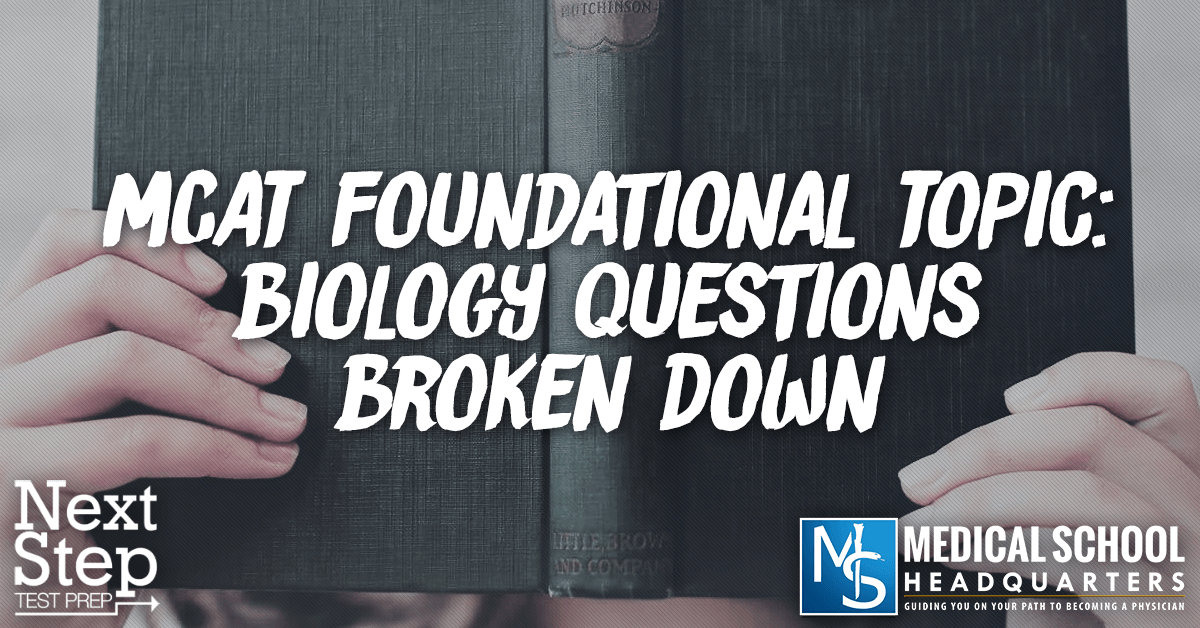Apple Podcasts | Google Podcasts

Session 79
We’re starting a series of foundational subject material. Each week, we’ll cover some foundational topics for each section. This is what you need to know.
I am joined every week by Bryan Schnedeker from Blueprint MCAT (formerly Next Step Test Prep). He’s the VP for Content Development at Next Step for the MCAT. He knows his stuff. He’s got some amazing history on his scores (he gets 525s!). And os his taking his expertise to us to help you crush your MCAT!
By the way, check out all our other podcasts on MedEd Media.
Back to the episode today, we discuss some foundational stuff. Bryan adds we’re touching the “fundamentals” over the next few weeks. These are questions that get to the real core of the sciences on the MCAT. Specifically today, we’re looking into membranes, being one of the most foundational topics in Biology.
[03:05] Fluid Mosaic Model
Question 03: Of the following statements, which correctly describes the fluid mosaic model?
- (A) Plasma membranes have a consistent composition and an even distribution of lipids and proteins.
- (B) Proteins and lipids tend to separate into rafts based on size.
- (C) Plasma membranes are formed up lipids and proteins that remain virtually motionless in their respective positions.
- (D) Plasma membranes act as two-dimensional fluids that allow the free diffusion of proteins and lipids within the leaflet.
Bryan’s insights:
For (D), a leaflet is one half of the plasma membrane. And this is the right answer. The fluid part of fluid mosaic means that the proteins can flow around within a given chunk of the cell membrane.
Bryan says you can cut corners on the passage, but you’ve got to read every word of every answer choice when you work on the questions.
Again, within the leaflet means within the membrane. A leaflet can either be outward-facing part of the membrane or the inward-facing part of the membrane. So two leaflets make a membrane.
[06:25] Fatty Acids and Sterols
Question 04: A researcher is attempting to create an artificial cell membrane that retains its fluidity at extremely low temperatures. Which features should he incorporate in this membrane?
- (A) High levels of unsaturated fatty acids
- (B) High levels of sterols
- (C) High levels of saturated fatty acids
- (D) Both A and B
Bryan’s Insights:
Butter becomes a fat because it’s saturated. Olive oil stays a liquid because it’s unsaturated. Unsaturated has a little kink in the chain. So instead of a nice, smoothly packing big, long fatty acid chain that can pack up right against another one, unsaturated introduces this fluidity.
In this case, the right answer is (D). Cholesterol helps maintain fluidity as well as the unsaturated acids.
[07:58] Transmembrane Proteins
Question 05: Which of these statements accurately identify a function of transmembrane proteins?
- They act as receptors for hormones and initiates signal transduction pathways.
- They allow for transport of charge molecules across the cell membrane.
III. They are responsible for the production of the majority of the ATP synthesized in eukaryotic cells.
- (A) I only
- (B) III only
- (C) I and II
- (D) I, II, and III
Bryan’s Insights:
The right answer is (D).
[09:55] Ions and Membranes
Question 07: A researcher is investigating the absorption of manganese ions by epithelial cells. After observation, he concluded the manganese is moved into a cell until it reaches a concentration equilibrium. At which point, transport stops. Which of the following can be inferred?
- (A) Transport is passive and manganese can diffuse through the membrane.
- (B) Transport is passive and manganese uses a protein channel to pass through the membrane.
- (C) Transport is active and ATP is required to shove a manganese into a cell.
- (D) Transport is active and manganese is couple with another ion which moves down its concentration gradient as manganese is carried inward.
Bryan’s Insights:
Remember that ions don’t easily pass through cell membranes. And because ions are charged, and cell membranes are nonpolar, so the answer choice (A) is not going to work.
Since the question suggest equilibrium, if you’re going to actively pump something in a direction, you’re going to push it well past the equilibrium position. You’re not just going to hit one molar inside or outside. You’re going to actively pull it in. But manganese just hits the equilibrium position of even concentration, so the right answer here is (B), passive and uses a protein channel.
So make sure you’re solid on what sorts of things can just diffuse passively directly through the cell membrane versus what sorts of things need a channel to go through.
Links:
SEARCH SITE
SEARCH SITE
LISTEN FOR FREE











